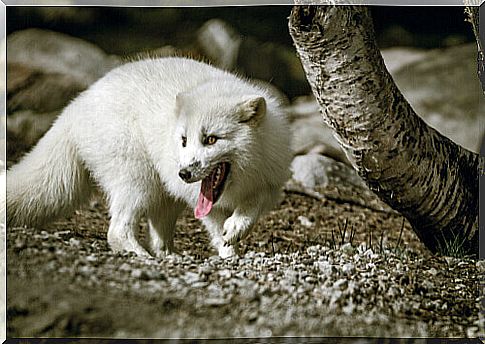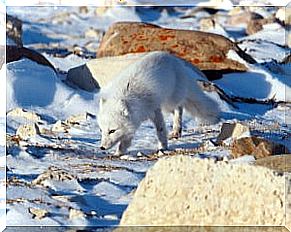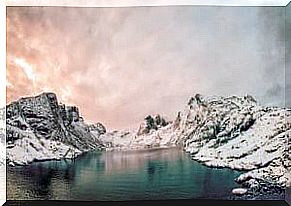Why Did An Arctic Fox Travel 3,500 Kilometers?

The Arctic fox ( Vulpes lagopus ) is an animal linked to the ecosystems of the tundra that we can find in the far north of Europe, Asia and America. It is a territory besieged by climate change, which requires this species to undergo strenuous journeys. None of which, however, is as hard and challenging as what was recently discovered.
The great journey of the arctic fox
Researchers from the Norwegian Polar Institute could not believe the data provided by the GPS beacon that they had placed on a young female belonging to this species of Northern Hemisphere canine. In just two months, this fox had traveled more than 3,500 kilometers.
On May 26, this animal was found in the Svalbard archipelago, an inhospitable region whose name means “cold coast” and which is located in the north of Norway, in the middle of the Arctic Ocean. In just 76 days, the animal had traveled an average of nearly 50 kilometers per day to reach Ellesmere Island in Canada.

The GPS beacon of this arctic fox then stopped working, but it was possible to recover these data, endowed with such great interest for science: it had never been documented, in fact, that one of these animals had ever traveled such a long distance and at such speed.
Researchers have come to think that the animal may have fallen victim to the hunt and transported on a ship or other means of transport. However, things did not turn out that way.
Why did he make such a long journey?
Although this story seems characterized by an epic breath, in reality it requires us to observe a very sad reality. Climate change is forcing large numbers of species to travel great distances in search of food.
This phenomenon endangers their survival and warns us once more that global warming is a reality that will hit us fully, if we do not seriously oppose it.

The first beings forced to suffer the consequences are undoubtedly the animals living in the Arctic and other cold regions of the planet. It must be emphasized that, even if it is a drastic shift, the arctic fox is an animal that travels great distances between the islands thanks to the icy surfaces present during most of the year.
Each summer, however, we can see how the ice joins together fewer and fewer Arctic territories. As a result, these routes could be cut off forever, forcing some of these animals to become trapped in archipelagos where the resources they need are barely available.
The elimination of these gigantic natural faunal passages would therefore isolate entire populations of animals.









